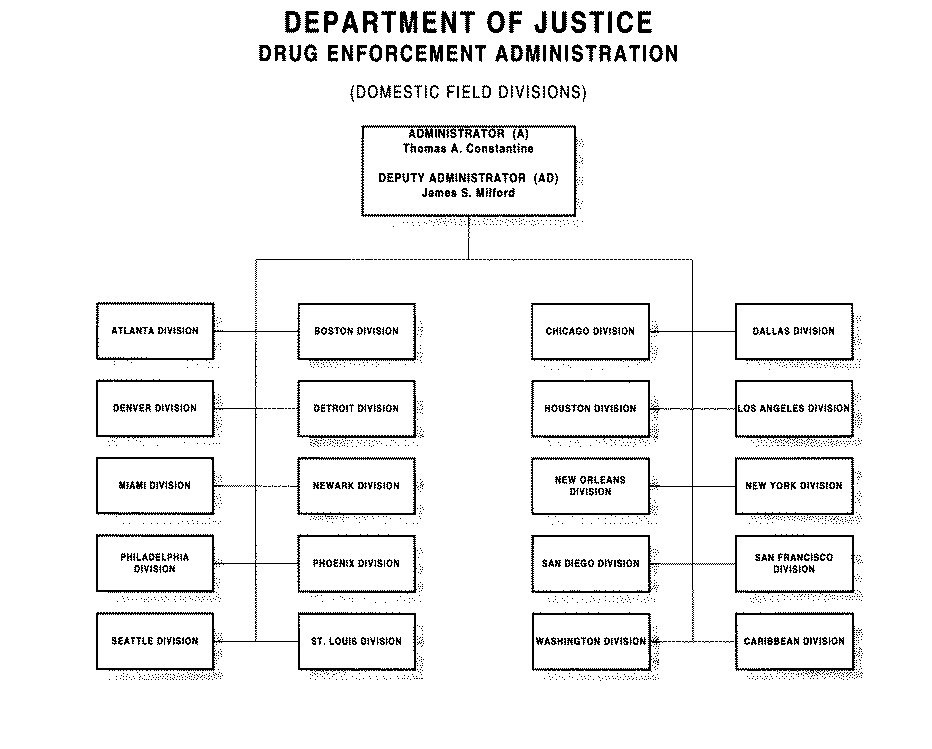
Supplemental Financial and Management Information
The (Federal) Bureau of Narcotics (FBN) was established in July 1930 when President Herbert Hoover appointed Harry J. Ainslinger its first Commissioner of Narcotics, a position he held under four U.S. presidents, spanning more than three decades.
Mr. Ainslinger believed that drug control in the United States was most effectively dealt with as close to the source as possible. Accordingly, he assigned FBN agents to various ports of entry, and personally reached agreements with the heads of 20 law enforcement agencies around the world to exchange drug intelligence. These efforts resulted in a dramatic rise in drug seizures in 1930.
The FBN's main priorities during this period were cocaine and opiate cases; because of limited resources and personnel, marijuana cases were not a high priority. However, the marijuana problem grew during the 1930s.
As the gloom of the Great Depression spread across the United States, so did the use of marijuana. Concurrently, politicians from states along the U.S. - Mexican border warned of a marijuana epidemic. By 1936, all 48 states had enacted legislation to control the cultivation of the cannabis plant, but its production and use were not prohibited by Federal law. In 1937, Congress placed marijuana and hashish in the category of illegal, federally controlled drugs when it passed the Marijuana Tax Act.
With the advent of World War II, the Mediterranean Sea was effectively closed to drug traffic. International trafficking was suppressed to the point that heroin on the streets of the United States in 1940 was only 5 percent pure, and many addicts were reported to be in search of paregoric, an anti-diarrheal containing powdered opium. The heroin shortage resulted in a rise of thefts from pharmacies, hospitals, and other sources of legitimate drugs. For the first time, barbiturates became recognizable as a potential drug abuse problem.
The post-war years brought new drug problems to the United States. Cocaine had been virtually non-existent since 1930, but began showing up at U.S. ports of entry, and was traced to clandestine factories in Peru. Until 1946, each new drug that came along, including synthetic drugs, required separate legislation before it could be controlled. Recognizing the inefficiency of this arrangement the FBN was given blanket jurisdiction over all drugs.
In the 1950s, Mexican opium made its way to New York, where it was refined into heroin, and then distributed to major cities throughout the United States. FBN agents began to see a rise in addiction in major metropolitan areas during this time as well as a drop in the median age of drug offenders. Both the Boggs Act of 1951 and the Narcotic Control Act of 1956 imposed harsher penalties, as well as mandatory prison sentences, for narcotic violations.
America's social upheaval and experimentation with drugs in the early 1960s dictated that a new, tougher approach to fighting drugs was warranted. Accordingly, in 1966 a new Federal enforcement unit, the Bureau of Drug Abuse Control (BDAC), directed by John Finlator, was created within the Food and Drug Administration. Its responsibility was to control stimulants such as methamphetamine and various hallucinogens.
In 1968, the Johnson Administration consolidated the FBN and BDAC by implementing Reorganization Plan Number I to establish, under the Department of Justice, the Bureau of Narcotics and Dangerous Drugs (BNDD). Following this, Richard M. Nixon was elected president, partly on his promise to restore law and order to the nation.
On October 27, 1970, Congress passed the comprehensive Drug Abuse Prevention and Control Act, which replaced more than 50 pieces of drug legislation. Title II of the Act, known as the Controlled Substances Act (CSA) gave Congress the authority to regulate interstate commerce for drugs. It also established 5 schedules that classify controlled substances according to their potential for abuse. Drugs were placed into categories according to how dangerous they were, how great their potential for abuse, and whether they have any legitimate medical value.
During this period, BNDD's budget more than quadrupled. Its agent force grew to 1,361 by February 1972, and its foreign and domestic arrest totals doubled. In addition, BNDD had regulatory control over more than 500,000 registrants licensed to distribute licit drugs. It also had 6 of the most complete forensic laboratories in the world.
Moreover, BNDD was not alone in fighting drugs. The U.S. Customs Service had a drug investigations unit to deal with drug smuggling. Also, the FBI was being drawn deeper into the drug war as organized crime became increasingly more involved in drug trafficking activities.
Acknowledging the growth of cocaine processing in South America and heroin refining in Southeast Asia, President Nixon agreed with Congress to implement Reorganization Plan Number 2, which consolidated all federal anti-drug forces under a single unified command within the Department of Justice. This elite drug-fighting organization, the DEA, was created on July 1, 1973.
An Executive Order abolished the Bureau of Narcotics and Dangerous Drugs, the Office of Drug Abuse Law Enforcement, and the Office of National Narcotics Intelligence, and placed their combined functions in the new DEA. This consolidation was undertaken to unify drug investigations, to create a single liaison between Federal drug agents and their State and local, as well as foreign, counterparts. Twenty-three years later, the DEA remains the only U.S. agency whose sole mission is to combat drug trafficking.
Not only is the DEA the lead agency for domestic enforcement of Federal drug laws, but it also has sole responsibility for coordinating and pursuing U.S.drug investigations abroad. The DEA is dedicated to conceptualizing and implementing the most effective drug law enforcement strategy possible - one that compliments and energizes our State and local counterparts and one that charts the course for and harmonizes the efforts of all other Federal agencies with drug enforcement or drug intelligence responsibilities. The DEA also plays a vital role in supporting useful demand reduction and user compatibility programs.
Given the magnitude and pervasiveness of the illegal drug problem, one component of a successful drug enforcement strategy is crucial: Federal, State, local, and foreign cooperation. In the 1990s, this DEA strategy has formed the basis for multi-organizational and cooperative approaches to better address drug trafficking on a regional, national, and international scale.

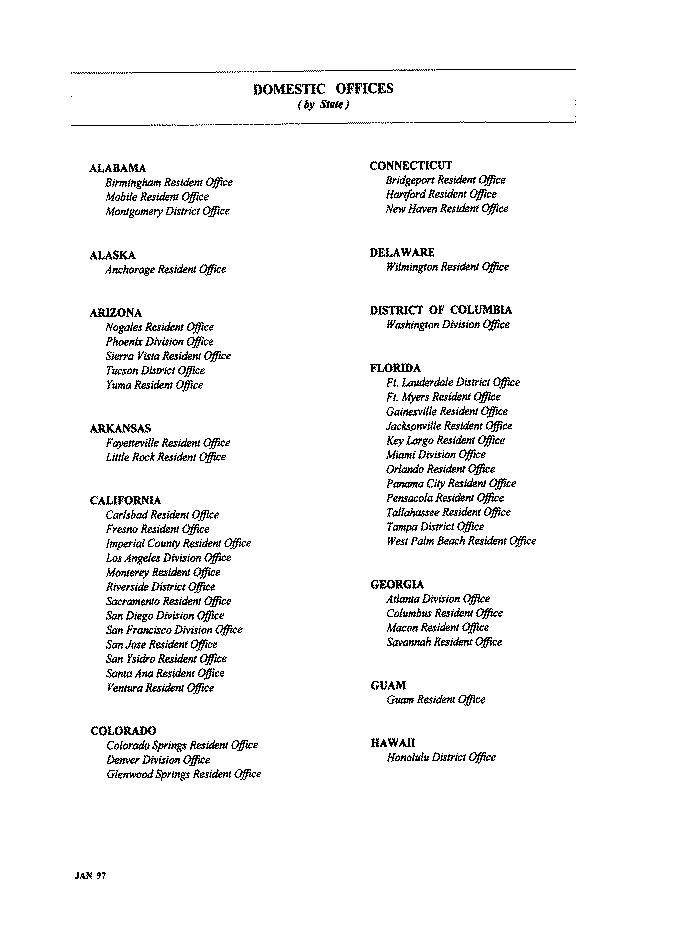
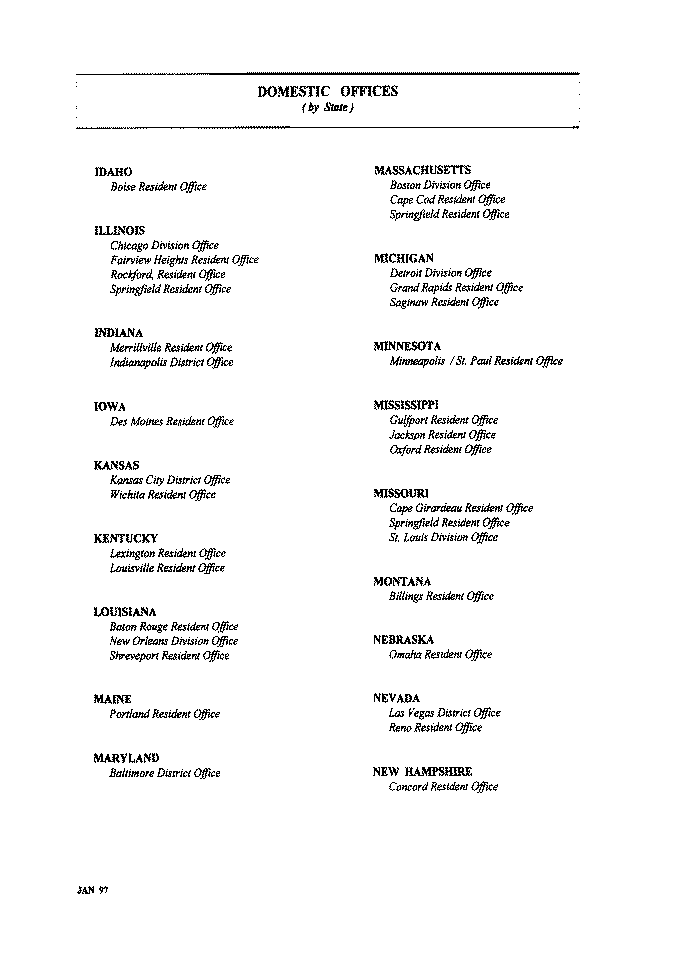
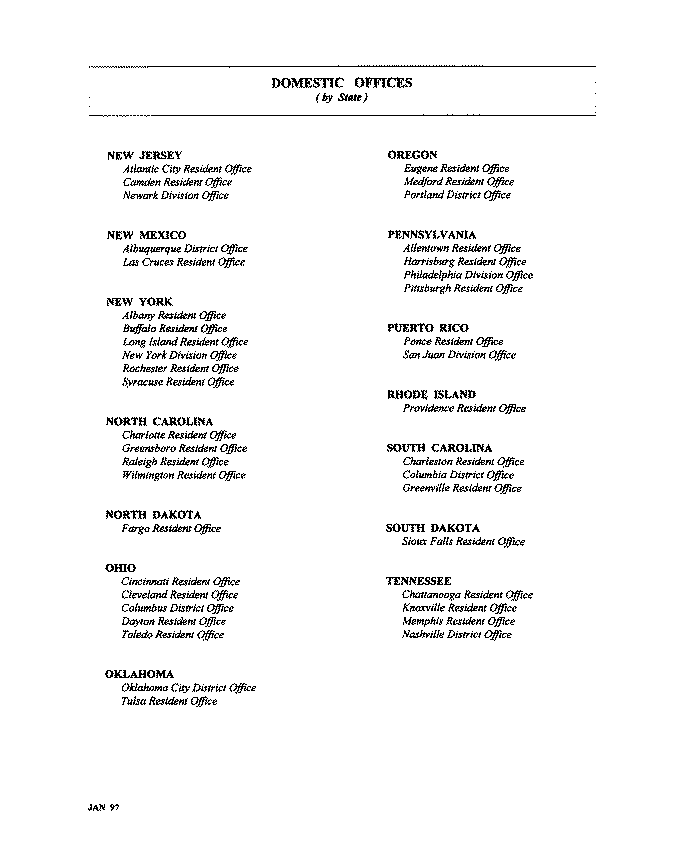
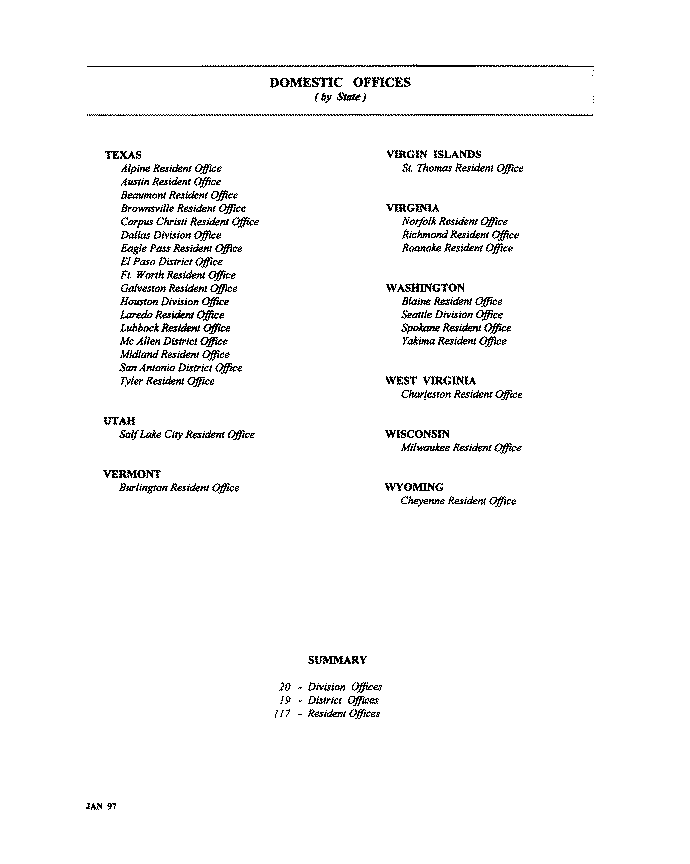

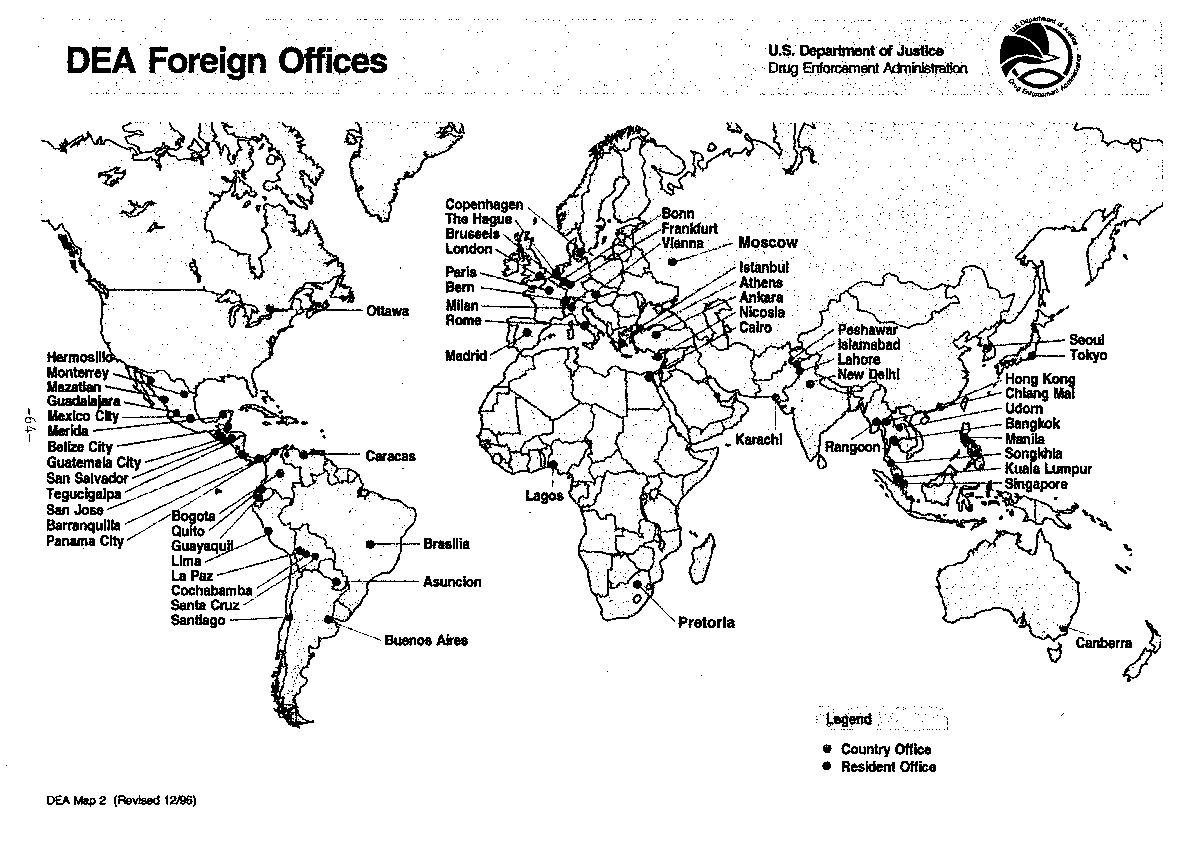
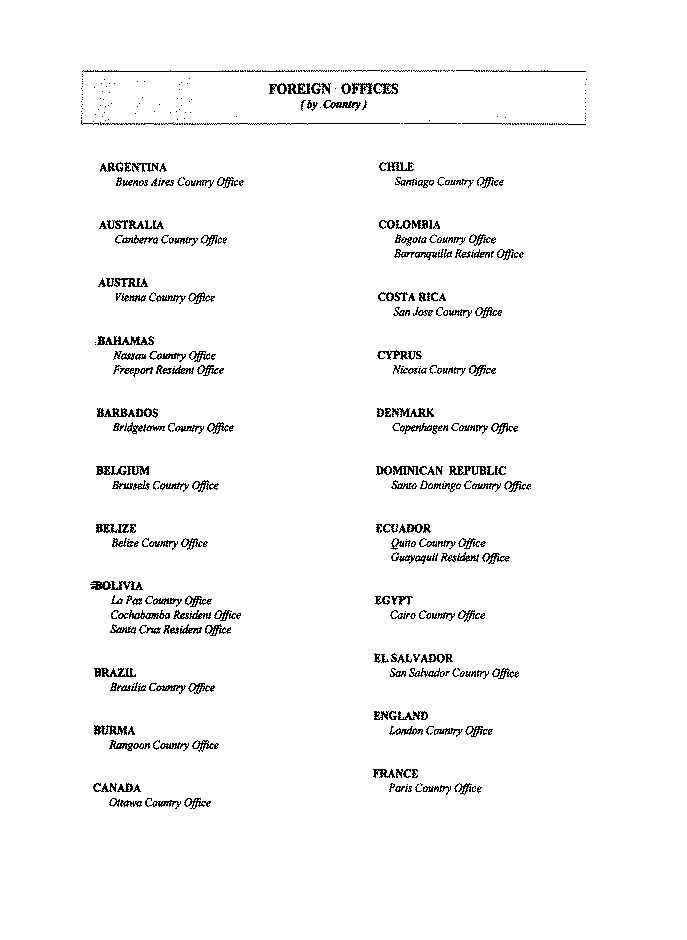
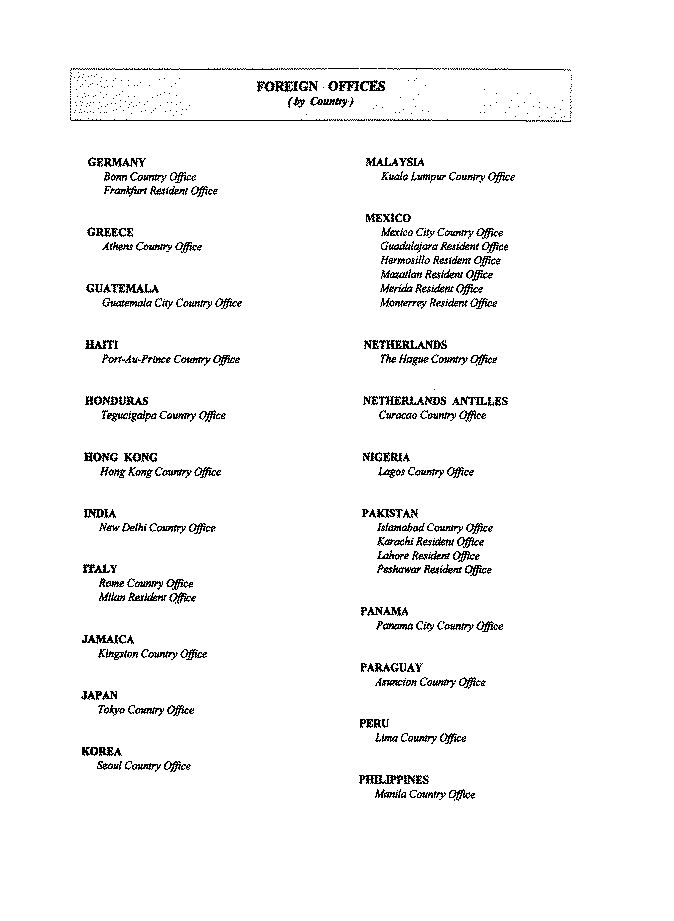
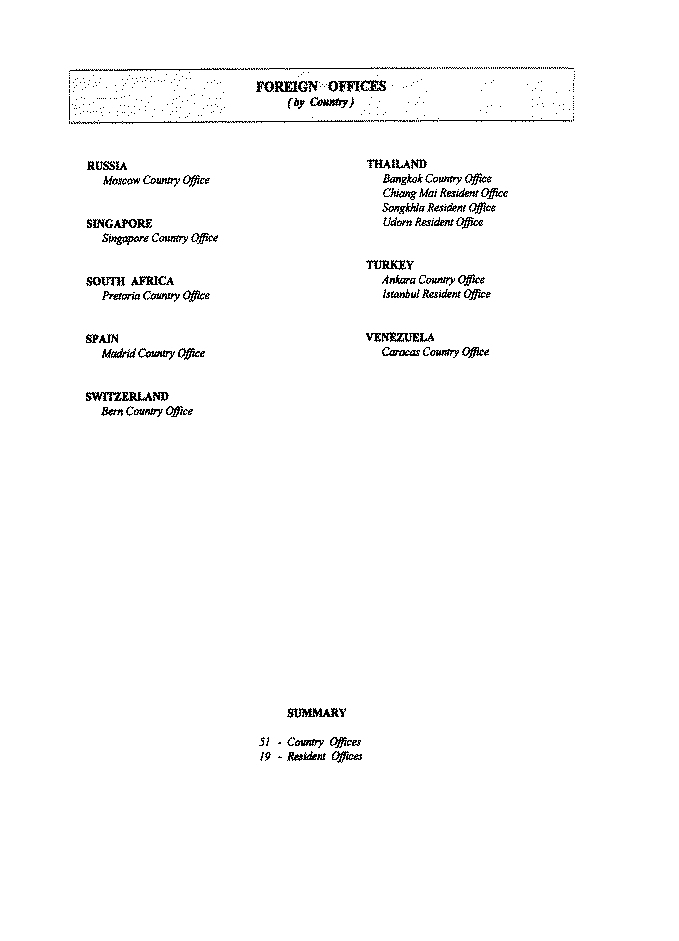
#####